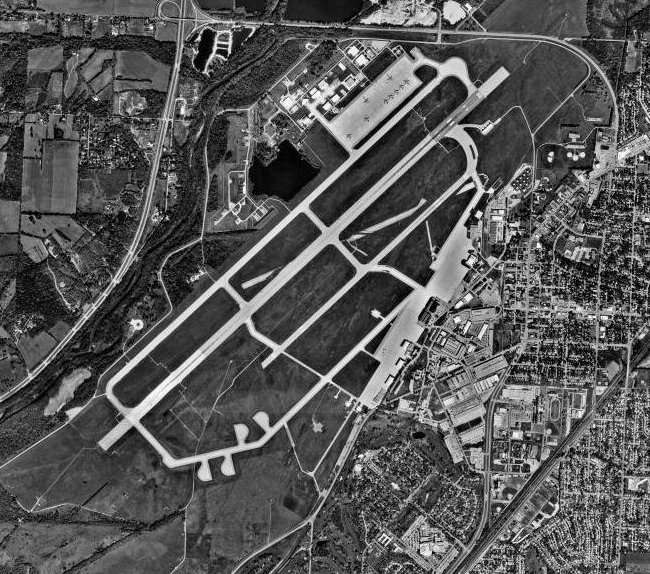By Paul Dean, 17 February 2019
(UFOs – Documenting The Evidence, Melbourne , Australia
NOTE: This blog post inexplicably disappeared from the
blog. Some of the blog posts do not show on the blog when they are transferred
over to “Older Posts.” But all the blog posts (click on the date) can be found in
the “BLOG ARCHIVE.”
Quote from the article:
“For over a year, the so-called ‘UFO community’, and the wider population in general, has been consuming a constant diet of frequently startling information regarding a 2007 to 2013 partnership of American military intelligence programs that were largely based at America’s Defence Intelligence Agency (DIA). Managed first by a James T. Lacatski, and then by a Luis Elizondo, the larger, more formal of the two was known as the Advanced Aerospace Weapon System Application Program (AAWSAP). The smaller, less solidified program was known as the Advanced Aerospace Threat and Identification Program (AATIP). These efforts, from what we know thus far, analysed unexpected aerospace threats, breakthrough physics, associated foreign developments, and even the possible application and use of next generation principles in America’s military apparatus. Also studied, at least within AATIP, was the issue of Unidentified Flying Objects (UFO). In fact, the more we find out about the entire AAWSAP/AATIP affair, the more it seems that the study of the core UFO phenomena very much overlapped with the investigation of these foreign aerospace developments, emerging technologies, and cutting-edge physics. For the purposes of this piece, it is paramount that we look at some of the precise wording contained in the available information on the AAWSAP/AATIP saga.
Obviously, some commentators keenly noted that much of the available information regarding AAWSAP/AATIP has centred around the aforementioned subjects of ‘far-term aerospace threats’, ‘breakthrough technologies’, ‘threat identification’, and ‘emerging’ or ‘disruptive’ foreign aerospace developments. These tantalising phraseologies aren’t just repeated loosely or occasionally. There is consistency and purpose to much of what has been released. Moreover, some critics have effectively proclaimed that it should be no surprise whatsoever that someone, somewhere, in America’s military-intelligence community would be looking into foreign or threatening aerospace developments, or emerging aerospace technologies. This is entirely true, but the notion that such investigations could be solely handled by just one single under-resourced person, who in this case was DIA employee and AAWSAP/AATIP manager Luis Elizondo, is of course preposterous. Even with outside contractual assistance, the workload would be insurmountable.
Students of the UFO topic are well aware that the United States Air Force’s (USAF) old UFO investigation programs, like Project Sign and Project Blue Book, were largely placed within the old Air Technical Intelligence Center Ohio Space Intelligence Center
NASIC, like its predecessors, is based at Wright-Patterson AFB, and serves as one of America US
NASIC is currently and directly assigned to the USAF’s Deputy Chief of Staff for Intelligence, Surveillance and Reconnaissance (AS/A2). Earlier, from June, 2007, to September 2014, NASIC was assigned to the USAF’s Intelligence, Surveillance and Reconnaissance Agency (AFISRA). NASIC’s contemporary organisational structure comprises of four “Intelligence Analysis Groups”. Currently, these are the Air and Cyberspace Intelligence Group, the Geospatial and Signatures Intelligence Group, the Global Exploitation Intelligence Group, and the Space, Missiles and Forces Intelligence Group. Subordinate to these four groups are a total of eighteen squadrons, the exact and current make-up of which I am yet to finally ascertain. Moreover, this organisational configuration is supported by four Directorates. These are the Communications and Information Directorate, the Human Resources Directorate, the Logistics Directorate, and the Plans and Programs Directorate. Finally, NASIC also oversees the Civil Aviation Intelligence Analysis Center , though this center is now physically located at Joint Base Anacostia-Bolling in Washington DC
In conclusion, AAWSAP/AATIP’s myriad catchphrases are emulated, sometimes precisely, in NASIC’s core vernacular. Currently, one could be forgiven for assuming that phraseology like ‘foreign aerospace threats’, ‘disruptive technologies’, ‘new physical principles’, ‘potential capabilities’, and ‘technological surprise’ were all AAWSAP/AATIP terms. In fact, they are all NASIC references, and have been for a very long time. Indeed, NASIC contains entire squadrons seemingly dedicated to such efforts. What do we make of the Threats Analysis Squadron? Or its Emerging and Disruptive Technologies Flight? Even one of NASIC’s fundamental ‘missions’ is that of ‘Disruptive Technologies’, and it’s aim is to assess ‘emerging technologies’ in the air and space domain. One could argue that the terminology used by AAWSAP/AATIP and NASIC may seem to refer to the same sort of concepts, but in fact mean very different things. Does NASIC only have a vision of, say, ten years versus AAWSAP/AATIP’s forty years? Maybe, but the 18th of August, 2008, DIA solicitation for AAWSAP tenders stated ‘from now through the year 2050’ in regard to understanding advanced applications, foreign threats and new physics. Having said that, the same document also states that AAWSAP’s focus ‘is not on extrapolations of current aerospace technology’, so how does one really know? Indeed, it’s difficult to verify anything at the moment. One thing is for certain: The line between AAWSAP/AATIP and NASIC may be very fuzzy. And the line between UFO’s and everything else going on here may be fuzzier still.”
NOTE: The U.S. Department of Defense programmes were called Advanced Aerospace Weapon System Applications Program, according to the U.S. journalist George Knapp, and Advanced Aerospace Threat Identification Program, according to Luis Elizondo and defense.gov (google.com).
U.S. Air Force website: “NATIONAL AIR AND SPACE INTELLIGENCE CENTER”:
Wikipedia article: “National Air and Space Intelligence Center
Wikipedia article: “Advanced Aerospace Threat Identification Program”:
Related posts:
(wikimedia.org image)
The northern section of Wright-Patterson Air Force Base (2000)
(wikimedia.org photo)
.jpg/800px-National_Air_and_Space_Intelligence_Center_(seal).jpg)
